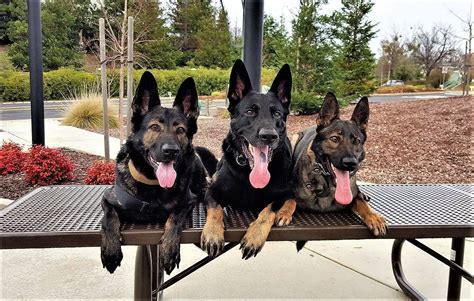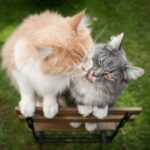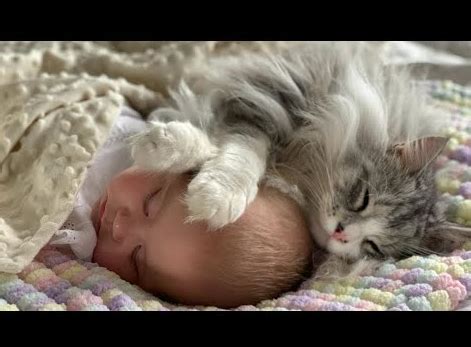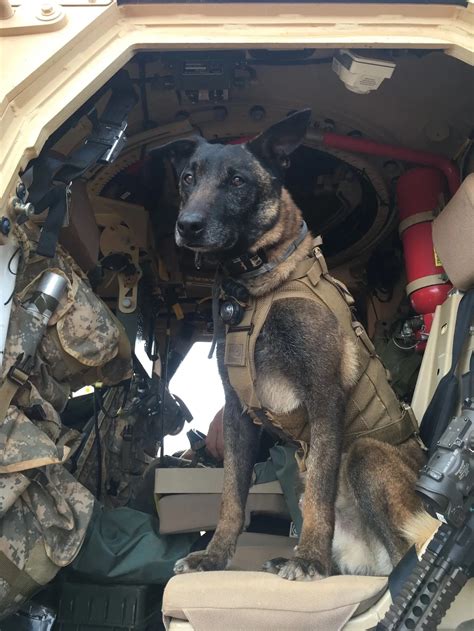
A Belgian Malinois named Poppy became an internet sensation after video footage captured her fearlessly defending her owner’s dock from an intruding seal in Washington State. The determined canine, exhibiting typical territorial instincts, barked and lunged at the seal until it retreated into the water, showcasing a dramatic showdown between a domesticated dog and a wild marine mammal.
The incident, which unfolded in a picturesque waterfront setting, quickly went viral, garnering attention for its unlikely pairing and Poppy’s unwavering courage. Her owner, identified only as Joe, filmed the encounter and shared it online, where it rapidly spread across social media platforms, capturing the hearts and attention of viewers worldwide. The video shows Poppy standing guard on the dock, barking assertively at the seal, which had hauled itself onto the wooden structure. Despite the seal being significantly larger, Poppy fearlessly stood her ground, ultimately persuading the marine mammal to abandon its attempt to rest on the dock.
“Poppy’s a very protective dog, and she sees the dock as her territory,” Joe explained. “She wasn’t going to let that seal stay there.” He added that such incidents are not uncommon, as seals frequently venture near the docks in the area, but Poppy’s reaction was particularly noteworthy.
The video sparked a wide range of reactions online, with many praising Poppy’s bravery and loyalty. Others expressed amusement at the unexpected confrontation, while some raised questions about the potential risks involved in such interactions between domestic animals and wildlife. Animal behavior experts weighed in on the incident, offering insights into the motivations behind Poppy’s actions and the broader implications of human-animal interactions in shared environments.
The Dockside Drama Unfolds
The encounter began when Joe noticed the seal attempting to climb onto the dock. Recognizing the potential for a confrontation, he began filming, anticipating Poppy’s reaction. As the seal successfully hauled itself onto the wooden planks, Poppy immediately sprang into action, positioning herself between the seal and the entrance to the property.
With a series of loud barks and assertive movements, Poppy made it clear that the seal was not welcome. The seal, initially unfazed by Poppy’s presence, seemed to assess the situation, briefly holding its ground. However, Poppy’s persistence and unwavering determination eventually proved too much for the seal, which slowly retreated back into the water.
Throughout the encounter, Joe remained calm and collected, allowing Poppy to manage the situation without direct intervention. He recognized that Poppy was acting on instinct and trusted her ability to handle the situation safely. “I knew she wouldn’t actually hurt the seal,” Joe said. “She just wanted to let it know that this was her space.”
Malinois Breed Characteristics
The Belgian Malinois is renowned for its intelligence, agility, and unwavering work ethic. Originally bred as herding dogs, Malinois possess a strong sense of loyalty and a natural protective instinct, making them well-suited for various roles, including law enforcement, search and rescue, and personal protection.
Their high energy levels and trainability require consistent exercise and mental stimulation. They are not typically recommended for inexperienced dog owners, as they need firm and consistent guidance. However, when properly trained and socialized, Malinois can be affectionate and devoted companions.
“Malinois are incredibly intelligent and driven dogs,” explained Dr. Sarah Miller, a certified dog trainer. “They thrive on having a job to do, and they are always eager to please their owners. However, their strong instincts can sometimes lead them into trouble, so it’s important to provide them with proper training and socialization.”
Poppy’s behavior in the video is consistent with the typical characteristics of the Malinois breed. Her territorial instincts, combined with her unwavering loyalty to her owner, prompted her to defend the dock from the perceived threat posed by the seal.
Seal Behavior and Habitat
Seals are marine mammals that inhabit coastal waters around the world. They are known for their playful nature and their ability to adapt to a variety of environments. Seals typically feed on fish, squid, and crustaceans, and they often haul out onto land or docks to rest and bask in the sun.
While seals are generally not aggressive towards humans, they can become defensive if they feel threatened or cornered. It’s important to maintain a safe distance from seals and to avoid approaching them, especially if they are with their young.
“Seals are wild animals, and it’s important to respect their space,” cautioned marine biologist Dr. Emily Carter. “While they may appear docile, they are capable of inflicting serious injuries if they feel threatened. It’s always best to observe them from a distance and to avoid any interaction that could potentially provoke them.”
The seal in the video likely approached the dock in search of a place to rest. Docks and other man-made structures often provide seals with a convenient and sheltered location to haul out of the water. However, these areas can also bring seals into close proximity with humans and their pets, increasing the likelihood of encounters like the one involving Poppy.
Ethical Considerations and Responsible Pet Ownership
The incident involving Poppy and the seal raises important ethical considerations about responsible pet ownership and the importance of respecting wildlife. While Poppy’s actions were largely instinctual, it’s crucial for pet owners to be aware of their animals’ behavior and to take steps to prevent potentially harmful interactions with wildlife.
This can involve keeping dogs on leashes in areas where wildlife is present, providing them with appropriate training and socialization, and being vigilant about their surroundings. It’s also important to educate oneself about the local wildlife and to understand their behavior patterns.
“As pet owners, we have a responsibility to protect both our animals and the wildlife that shares our environment,” emphasized animal welfare advocate Mark Johnson. “This means being proactive about preventing potentially harmful encounters and taking steps to minimize our impact on the natural world.”
In Poppy’s case, Joe’s calm and collected response to the situation was commendable. He allowed Poppy to manage the encounter without direct intervention, while also ensuring that the seal was not harmed. This demonstrates a responsible approach to pet ownership and a respect for wildlife.
Community Reactions and Online Buzz
The video of Poppy’s encounter with the seal quickly went viral, generating a flurry of comments and reactions on social media. Many viewers praised Poppy’s bravery and loyalty, while others expressed amusement at the unexpected showdown.
“Poppy is a true hero!” exclaimed one commenter. “She stood her ground against a much larger animal and protected her home.”
“That seal didn’t stand a chance,” joked another. “Poppy is the queen of the dock!”
However, some viewers raised concerns about the potential risks involved in such interactions between domestic animals and wildlife.
“It’s important to remember that seals are wild animals,” cautioned one commenter. “Poppy could have been seriously injured if the seal had decided to fight back.”
Animal behavior experts weighed in on the incident, offering insights into the motivations behind Poppy’s actions and the broader implications of human-animal interactions in shared environments.
“Poppy’s behavior is a classic example of territoriality,” explained Dr. Miller. “She sees the dock as her territory, and she was simply defending it from a perceived intruder.”
Dr. Carter added that the incident highlights the importance of understanding seal behavior and respecting their space. “Seals are often attracted to docks and other man-made structures, but it’s important to remember that they are wild animals and should be treated with respect.”
The Broader Context: Human-Wildlife Interactions
The encounter between Poppy and the seal is a reminder of the increasing frequency of human-wildlife interactions in a world where urban and suburban areas are expanding into previously wild habitats. As human populations grow and encroach upon natural environments, encounters between humans and animals are becoming more common, raising a variety of challenges and ethical considerations.
These interactions can range from benign encounters, such as observing wildlife from a distance, to more problematic situations, such as conflicts over resources or direct confrontations. In some cases, human activities can negatively impact wildlife populations, leading to habitat loss, displacement, and even extinction.
It’s crucial to find ways to coexist peacefully with wildlife and to minimize our impact on the natural world. This requires a multifaceted approach that includes habitat conservation, responsible pet ownership, public education, and the implementation of effective wildlife management strategies.
Looking Ahead: Promoting Coexistence
The story of Poppy and the seal serves as a microcosm of the larger challenges and opportunities associated with human-wildlife interactions. By learning from this encounter and adopting responsible practices, we can promote coexistence and ensure that both humans and animals can thrive in a shared environment.
This includes educating pet owners about the importance of responsible pet ownership, promoting awareness of local wildlife and their behavior patterns, and supporting efforts to conserve and protect natural habitats. It also requires a willingness to adapt our behavior and to make choices that minimize our impact on the environment.
By embracing a spirit of respect and understanding, we can create a world where humans and animals can coexist peacefully and sustainably. Poppy’s story, while seemingly simple, offers a valuable lesson in the importance of responsible stewardship and the need to protect the natural world for future generations. The incident also highlights the adaptability of animals in different environments, and the way domestic animals react to wildlife presence.
FAQ: Frequently Asked Questions
1. What breed of dog is Poppy, and what are the characteristics of this breed?
Poppy is a Belgian Malinois. This breed is known for its intelligence, agility, and strong work ethic. They are often used in law enforcement and search and rescue due to their trainability and protective instincts. They require experienced owners who can provide consistent training and exercise. They are loyal and protective, with high energy levels and a need for mental stimulation. Poppy’s behavior reflects the typical territoriality and protectiveness seen in Malinois breeds.
2. What was the seal doing on the dock, and is it common for seals to be in that area?
The seal was likely attempting to rest on the dock, as docks and similar structures provide a convenient place for them to haul out of the water. According to Poppy’s owner, Joe, seals are frequently seen near the docks in that area of Washington State, seeking sheltered spots to rest.
3. Was the seal harmed during the encounter with Poppy?
According to the information available, the seal was not harmed. Poppy’s owner, Joe, stated that Poppy was simply trying to assert her territory and did not intend to hurt the seal. The seal eventually retreated back into the water unharmed. Joe’s calm response and trust in Poppy’s behavior ensured no harm came to the seal.
4. What are some safety tips for handling encounters between pets and wildlife?
- Keep pets on leashes: This helps maintain control and prevents them from approaching or harassing wildlife.
- Provide training and socialization: Proper training can help pets respond to commands and avoid aggressive behavior.
- Be vigilant: Pay attention to your surroundings and watch for signs of wildlife presence.
- Respect wildlife: Maintain a safe distance and avoid approaching or feeding wild animals.
- Educate yourself: Learn about the local wildlife and their behavior patterns.
- Supervise pets: Always supervise pets outdoors, especially in areas where wildlife is common.
- Avoid confrontation: If an encounter occurs, try to calmly separate your pet from the wild animal.
5. What are the broader implications of human-wildlife interactions, as highlighted by this incident?
The incident highlights the increasing frequency of human-wildlife interactions as human populations expand into previously wild habitats. This can lead to conflicts over resources and direct confrontations, raising ethical considerations about responsible pet ownership and the importance of respecting wildlife. It underscores the need for habitat conservation, public education, and effective wildlife management strategies to promote peaceful coexistence. It also raises awareness of the potential risks and responsibilities involved in living in areas where wildlife is present. The need to balance human activities with the preservation of natural environments is crucial to reduce negative impacts on wildlife populations.
Additional Depth and Contextual Information
Beyond the immediate details of the Malinois versus seal encounter, a deeper dive into the relevant factors provides a more comprehensive understanding of the incident and its implications. Understanding animal behavior, environmental considerations, and responsible pet ownership enhances the overall context of the news event.
Understanding Canine Territoriality
Canine territoriality is a fundamental behavior rooted in the evolutionary history of dogs, stemming from their wolf ancestors. Wolves live in packs and establish territories to secure resources, such as food, water, and shelter. This instinctual drive to defend resources and living space has been passed down to domesticated dogs, though it manifests differently depending on the breed, individual temperament, and training.
Territorial behavior in dogs is often triggered by perceived threats or intruders entering what they consider their territory. This can include other animals, humans, or even unfamiliar objects. The dog’s response can range from barking, growling, and posturing to more aggressive actions like lunging or biting.
In Poppy’s case, her territorial behavior was likely amplified by her breed characteristics. Belgian Malinois are known for their strong protective instincts and their unwavering loyalty to their owners. They are naturally inclined to guard their territory and to defend their pack (in this case, her owner and the dock, which she perceives as her territory) from perceived threats.
Understanding the underlying motivations behind Poppy’s actions is crucial for interpreting the incident accurately. She wasn’t simply being aggressive; she was acting on instinct to protect her territory and her owner. This highlights the importance of responsible pet ownership, which includes understanding and managing a dog’s natural behaviors.
The Ecology of Seals in Coastal Environments
Seals are an integral part of marine ecosystems, playing a crucial role in the food chain and contributing to the overall health of coastal environments. They are opportunistic predators, feeding primarily on fish, squid, and crustaceans. Their presence helps regulate populations of these prey species and maintains the balance of the ecosystem.
Seals are also important indicators of environmental health. Their sensitivity to pollutants and changes in water quality makes them valuable sentinels for monitoring the health of marine ecosystems. Declines in seal populations can signal underlying problems in the environment, such as pollution, overfishing, or habitat degradation.
Seals often haul out onto land or docks to rest, bask in the sun, and give birth to their young. These haul-out sites are essential for their survival, providing them with a safe and sheltered place to recover from foraging trips and to raise their pups.
However, the increasing presence of humans in coastal areas has led to habitat loss and disturbance for seals. Development, pollution, and recreational activities can all negatively impact seal populations. It’s crucial to protect and conserve seal habitats to ensure their long-term survival.
The seal in the video was likely seeking a safe place to rest when it attempted to haul out onto the dock. Docks and other man-made structures can provide a convenient and sheltered location for seals, but they can also bring them into close proximity with humans and their pets, increasing the likelihood of encounters like the one involving Poppy.
Responsible Pet Ownership in Wildlife-Prone Areas
Living in an area where wildlife is common requires a heightened sense of responsibility as a pet owner. It’s crucial to take proactive steps to protect both your pet and the wildlife that shares your environment.
One of the most important steps is to keep your pet under control at all times. This means keeping them on a leash when walking in areas where wildlife is present and supervising them closely in your yard. Leashes prevent pets from approaching or harassing wildlife, and supervision allows you to intervene if an encounter occurs.
Training and socialization are also essential. A well-trained dog is more likely to respond to commands and avoid aggressive behavior. Socialization helps them become accustomed to different people, animals, and environments, reducing the likelihood of fear-based aggression.
It’s also important to educate yourself about the local wildlife and their behavior patterns. Understanding the habits of seals, bears, coyotes, and other animals can help you anticipate potential encounters and take steps to avoid them.
Avoid leaving food or garbage outdoors, as this can attract wildlife to your property. Store food in airtight containers and dispose of garbage properly to prevent animals from scavenging.
If an encounter occurs, remain calm and try to separate your pet from the wild animal. Avoid making sudden movements or loud noises, as this can startle or provoke the animal. If necessary, use a firm voice or a water hose to discourage the animal from approaching.
The Role of Social Media in Amplifying the Story
The rapid spread of the video featuring Poppy and the seal highlights the power of social media to amplify news events and to shape public opinion. Social media platforms provide a powerful tool for disseminating information quickly and widely, reaching a global audience in a matter of hours.
However, the viral nature of social media also presents challenges. Information can be easily misconstrued or taken out of context, leading to misunderstandings and misinformation. It’s crucial to critically evaluate information shared on social media and to rely on credible sources for accurate reporting.
In the case of Poppy and the seal, the video sparked a wide range of reactions online, from praise for Poppy’s bravery to concerns about the potential risks involved in such encounters. Social media provided a platform for these diverse perspectives to be shared and debated.
The virality of the video also drew attention to the broader issues of human-wildlife interactions and responsible pet ownership. It prompted discussions about the importance of protecting wildlife habitats and the need for pet owners to take steps to prevent potentially harmful encounters.
Expert Perspectives on Animal Behavior
The incident involving Poppy and the seal has provided an opportunity for animal behavior experts to offer insights into the motivations behind the animals’ actions and the broader implications of human-animal interactions.
Dr. Sarah Miller, a certified dog trainer, explained that Poppy’s behavior is a classic example of territoriality. She sees the dock as her territory, and she was simply defending it from a perceived intruder. Dr. Miller emphasized the importance of understanding a dog’s natural instincts and providing them with proper training and socialization to manage their behavior.
Dr. Emily Carter, a marine biologist, added that the incident highlights the importance of understanding seal behavior and respecting their space. Seals are often attracted to docks and other man-made structures, but it’s important to remember that they are wild animals and should be treated with respect. Dr. Carter cautioned against approaching seals or attempting to interact with them, as this can be dangerous for both humans and animals.
These expert perspectives provide valuable context for understanding the incident and for promoting responsible interactions between humans and animals. By learning about animal behavior and respecting their space, we can reduce the likelihood of conflicts and create a more harmonious environment for all.
Conservation Efforts and Coexistence Strategies
The increasing frequency of human-wildlife interactions underscores the need for effective conservation efforts and coexistence strategies. Protecting and restoring wildlife habitats is crucial for ensuring the long-term survival of many species.
Conservation efforts can include preserving natural areas, restoring degraded habitats, and creating wildlife corridors that connect fragmented habitats. These measures provide wildlife with the space and resources they need to thrive.
Coexistence strategies focus on reducing conflicts between humans and wildlife. This can involve implementing measures to prevent animals from entering human settlements, such as fencing and deterrents. It can also involve educating the public about wildlife behavior and promoting responsible interactions.
In coastal areas, protecting seal habitats is essential for maintaining healthy populations. This can involve restricting development in sensitive areas, reducing pollution, and implementing measures to prevent disturbance from boats and other recreational activities.
By working together, we can create a world where humans and animals can coexist peacefully and sustainably. This requires a commitment to conservation, responsible stewardship, and a willingness to adapt our behavior to minimize our impact on the natural world.









